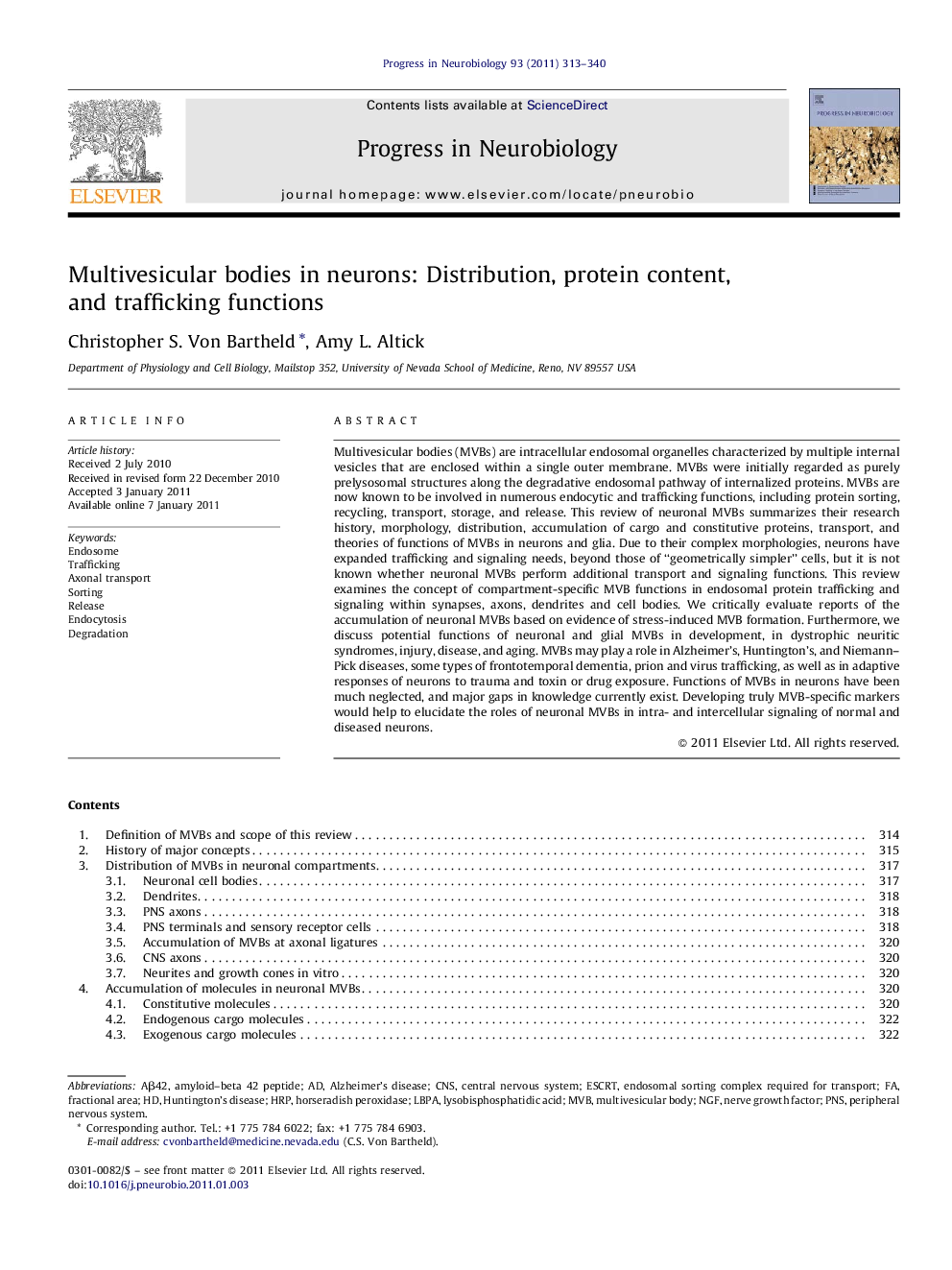| Article ID | Journal | Published Year | Pages | File Type |
|---|---|---|---|---|
| 4353683 | Progress in Neurobiology | 2011 | 28 Pages |
Multivesicular bodies (MVBs) are intracellular endosomal organelles characterized by multiple internal vesicles that are enclosed within a single outer membrane. MVBs were initially regarded as purely prelysosomal structures along the degradative endosomal pathway of internalized proteins. MVBs are now known to be involved in numerous endocytic and trafficking functions, including protein sorting, recycling, transport, storage, and release. This review of neuronal MVBs summarizes their research history, morphology, distribution, accumulation of cargo and constitutive proteins, transport, and theories of functions of MVBs in neurons and glia. Due to their complex morphologies, neurons have expanded trafficking and signaling needs, beyond those of “geometrically simpler” cells, but it is not known whether neuronal MVBs perform additional transport and signaling functions. This review examines the concept of compartment-specific MVB functions in endosomal protein trafficking and signaling within synapses, axons, dendrites and cell bodies. We critically evaluate reports of the accumulation of neuronal MVBs based on evidence of stress-induced MVB formation. Furthermore, we discuss potential functions of neuronal and glial MVBs in development, in dystrophic neuritic syndromes, injury, disease, and aging. MVBs may play a role in Alzheimer's, Huntington's, and Niemann–Pick diseases, some types of frontotemporal dementia, prion and virus trafficking, as well as in adaptive responses of neurons to trauma and toxin or drug exposure. Functions of MVBs in neurons have been much neglected, and major gaps in knowledge currently exist. Developing truly MVB-specific markers would help to elucidate the roles of neuronal MVBs in intra- and intercellular signaling of normal and diseased neurons.
Research highlights► Neuronal MVBs have expanded trafficking functions in neurons. ► Neuronal MVBs process signaling molecules. ► Formation of MVBs in neurons can be stress-induced. ► Neuronal MVBs are involved in multiple neurodegenerative diseases. ► MVB-specific markers would be extremly valuable for this field. ► Functions of neuronal MVBs in intra- and intercellular signaling remain to be explored.
